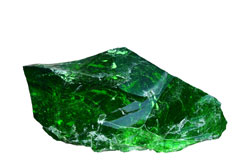
- The TRUTH About America's Water
- Water Pollutants that Cause Illness
- Are Minerals in Water Important for Health?
- Top 5 Drinking Water Contaminants
- Do I Need a Whole House Water Filter?
What Is A Typical Concentration for Silica (Sio2) or Silicates in Fresh Surface and Groundwater Supplies on Earth?
It’s common to hear the concern about having soluble silicate in drinking water. But what exactly is it and how it gets into our drinking water?
Soluble silicates are economical, effective, and environmentally responsible chemicals that have been used for more than 70 years to protect metals from the corrosive effects of water. Corrosion of steel structures is a common problem. The use of carbon steel as a construction material is continuously used despite its poor corrosion properties at surrounding temperatures.
Silicates are classified as corrosion inhibitors because they can deposit protective films onto various metal surfaces, isolating the metal from any further corrosive attack, and because they raise water pH which can make it less corrosive to metals. Silicates do not contribute zinc or phosphorous to treated water. According to the Government of Canada, “Corrosion protection is provided by the hydrolysis of sodium silicate to form negatively charged colloidal particles which migrate to the anodic area of the corrosion cell where they form a protective film with solid corrosion products.” Silica inhibitors have low environmental impact, low toxicity and provide good corrosion protection for TDS concentrations less than approximately 500 ppm. Once the film is formed, the protection is maintained as long as silicate treatment is continued. The film is self-healing so if the film is damaged as long as silicate treatment is continued, the silicate will no longer be damaged.

Laboratory and field experience has shown that silicate corrosion inhibitors are effective in many different types of water. Protection is provided in both acidic and alkaline water. In harder water slightly more silicate is needed to achieve the same degree of corrosion inhibition, since some of the injected silica may react with hardness ions before it has a chance to bond onto metal surfaces.
The term “silica” refers to the compound silicon dioxide (SiO2). Water is typically analyzed for silica as part of normal water quality analysis procedures. Silica levels are usually reported as mg SiO2/L. “Silicate” is a generic term for compounds that contain silicon, oxygen, and one or more metals. They can be naturally occurring or synthetic. As an example, PQ’s synthetic sodium silicate compounds can be represented by the generalized formula Na2O xSiO2, where “x” varies from 1.60 to 3.22 for commercial products. Naturally occurring silicate minerals make up nearly 90% of the earth’s crust. Dissolved silica is a minor but ubiquitous constituent of the hydrosphere. Commercial soluble silicates have a higher degree of polymerized silica species than natural dissolved silica because of higher concentrations; however, when diluted they depolymerize to molecular species that are indistinguishable from natural dissolved silica.
Sodium silicate adds silicate anions, together with sodium and hydroxyl ions, to water. Silica is found to some extent in all natural waters and is believed to be ecologically harmless. The charged, polymeric nature of the silica found in synthetic silicate solutions is responsible for its reaction with metals and corrosion inhibition properties. The sodium content of water will increase slightly with sodium silicate addition. This issue has been raised as a concern in some instances.





